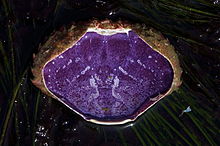SETI searches for signs of life in the microwave spectrum.
This is pure madness and here is the proof: NASA Voyager spacecraft have
only recently left our solar system. These vehicles, which are still transmitting
a very weak signal thanks to thermoelectric power generation, are still
many light years from the nearest star system. To receive these spacecraft
signals requires the largest tracking dishes on the planet at Canberra,
Australia (230ft.) NASA knows exactly what frequencies Voyager transmits
on, the digital code to make it transmit data and exactly how to decode
the data. Canberra also uses high gain, cooled microwave amplifiers.
SETI has none of this hardware or information on how to handle the signals
they attempt to detect. They use small dishes about the size of early
backyard dishes, un-cooled amplifiers and hopping around a limited number
microwave frequencies at hundreds of frequencies/second. This is basically
a shot-gun approach to looking for intelligent life. What chance does
this approach have to detect, decode and decipher a real alien signal.
SETI has proclaimed that any intelligent life will transmit a signal we
can pick up. Why would a alien race do that, and will we know what to
do with it once we have it?
Here is another big flaw: SETI almost certainly cannot pick up a Voyager
signal in our neighborhood , decode it and display it. Even if they were
given the frequency and software to do it by NASA. So how can SETI remotely
hope to detect a signal coming from another star system? Perhaps the real
purpose behind SETI is to perpetually get grants and collect money from
donors to create jobs, but not real science. Now that enough years have
now passed, perhaps their internal philosophy has taken on a life of its
own.
But the search to find planets that can sustain life is moving forward
by optical astronomers. By measuring the spectrum of stellar light as
it passes by a planet, it is possible to get an idea of the planet's size,
orbit and atmosphere. Searches tend to limit viable planets discovered
to those which have a oxygen-nitrogen atmosphere and water. There seems
to exist a unspoken guideline that intelligent life must be something
like human beings, or mammals.
Why are scientists attempting to apply our limited ideas of life to the
universe? Surely this is a big mistake. Every scientist alive 100 years
ago would laugh at the idea of black holes in space, especially if told
about the huge black hole found at the center of our galaxy. Today collapsed
stars are accepted as common knowledge, based on the discovery that these
stars can distort light, space and probably time.
To find life we must widen our search parameters. We know there are copper-based
lifeforms on Earth with Hemocyanin blood. These are known as Mollusks
(some 85,000 species exist) and Arthropods. [1]

A crab is one example of a Earth life-form containing copper-based blood.
Purple color is the Hemocyanin blood. Lobsters and Squid are also in this
family.
Arthropods include some of the most diverse species in the world such
as insects, spiders, crustaceans, etc... These species also have Hemocyanin
blood and have a exoskeleton. These species are perhaps the most radiation-resistant
lifeforms on Earth. Cockroaches can survive in radiation levels several
million times higher than radiation levels which kill a human being in
seconds.
Is there a hard rule that upright, walking and dexterous beings like us
must have red blood? Perhaps one such life-form might be a praying mantis
as tall as a man. Many alien abductees have seen these in charge over
other alien life-forms.
We know that down in the deepest part of our oceans bizarre lifeforms
exist and thrive. Pressures of more than 2,000 psi crush a foam coffee
cup into the size of a thimble, as demonstrated by one oceanographer using
a weight and a long cable. Temperatures of about 400F emitted by volcanic
vents can fry any life-form. But we have seen and brought these life-forms
back to the surface. These are strange lifeforms and plants which survive
and thrive in the narrow zone between sub-freezing seawater and super-heated
vent gases.
Somewhere in the universe are Moons or planets with these very conditions.
They too, must have lifeforms in their deep oceans but we may never detect
it from Earth - until a submersible robot is deployed by a spacecraft
to visits another planet or Moon. I intentionally use the plural term
for celestial bodies. If lifeforms exist on one such planet (Earth) or
another moon, logically there must exist similar life on other countless
planets and moons.
Arsenic is toxic to humans, but in 2010 NASA revealed the existence of
arsenic-based cell life. [2] What is fatal to one life-form may be the
basis of life to another.
We must consider diverse lifeforms on Earth logically exist elsewhere
in many places. Science must widen its search for life and not dismiss
a planet which may not have lifeforms like those on Earth. Science should
not be obsessed with thinking a abundance of water is required to support
life.
Bacteria exist on Earth which survive in some of the driest and most hostile
places. These life-forms should be our examples of what to look for.
Ted Twietmeyer
tedtw@frontiernet.net
[1] http://en.wikipedia.org/wiki/Hemocyanin
[2] http://www.wired.com/2010/12/nasa-finds-arsenic-life-form/
|
![]()
